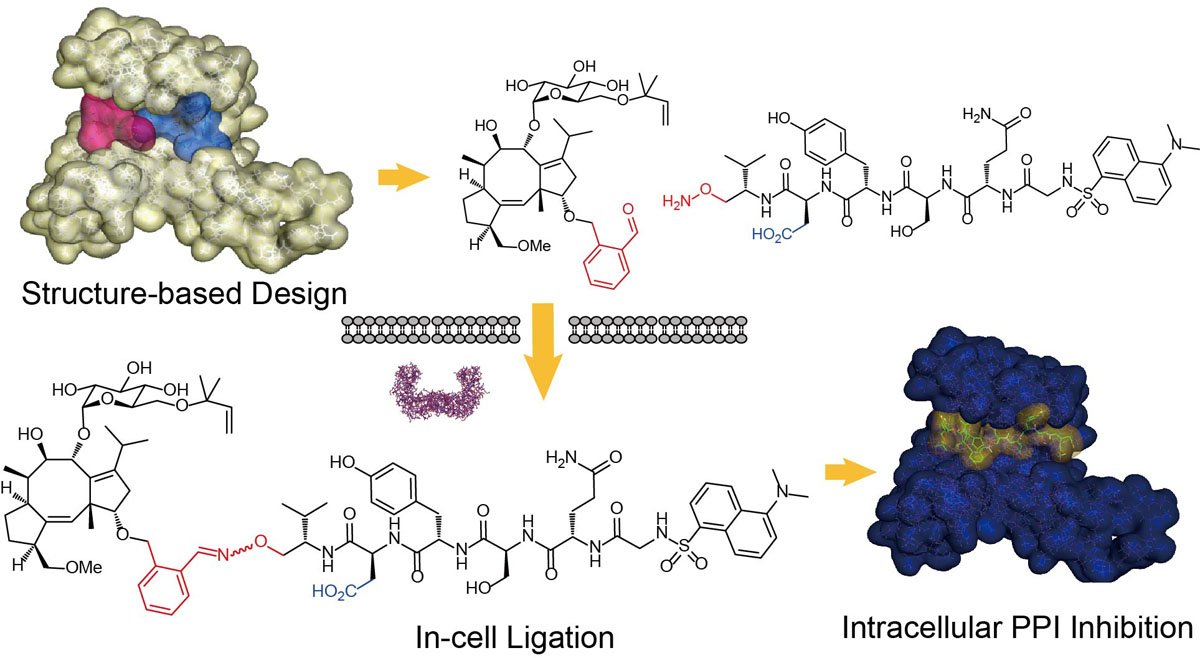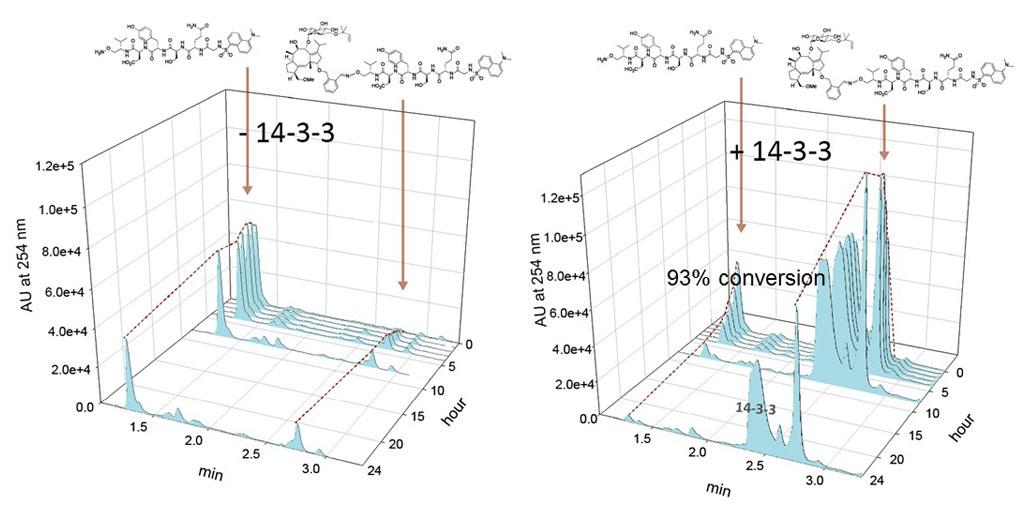A Mid-sized Agent Capable of Disrupting Intracellular Protein-protein Interactions is Now Generated in Cells.
|
Published in “Journal of the American Chemical Society”(Online Publication, December 9, 2015). |
|||||
|
Assoc Prof. Ohkanda, J., Prof. Uesugi, M., Project Res. Sato, S.1, Dr. Parvatkar, P. (Chemical Biology, Division of Biochemistry)
Prof. Kato, N. (Institute of Scientific and Industrial Research, Osaka University) |
|||||
|
Synthetic agents that disrupt intracellular protein-protein interactions (PPIs) are highly desirable for elucidating signaling networks and developing new therapeutics. However, designing cell-penetrating large molecules equipped with the many functional groups necessary for binding to large interfaces remains challenging. In this study, we demonstrated a rational strategy for the intracellular oxime ligation–mediated generation of an amphipathic bivalent inhibitor composed of a peptide and diterpene natural product, fusicoccin, which binds 14-3-3 protein with high affinity. Our results demonstrate that co-treatment of cells with small reactive molecules, the fusicoccin and the peptide, generates the corresponding conjugate in cells, resulting in significant cytotoxicity. In contrast, chemically synthesized conjugate is not cytotoxic, likely due to its inability to penetrate cells. The conjugate, but not the fusicoccin or the peptide, disrupts endogenous 14-3-3/cRaf interactions, suggesting that cell death is caused by inhibition of 14-3-3 activity. These results suggest that intracellular generation of large-sized molecules may serve as a new approach for modulating PPIs. |
|||||
|
Figure 1. Intracellular oxime ligation between fusicoccin and peptide derivatives that are rationally designed based on the crystal structure of the ternary complex. |
|||||
|
Figure 2. The oxime ligation was significantly accelerated in the presence of 14-3-3, producing the corresponding conjugate product in more than 90% conversion yield. |
|||||
|
Protein-protein interactions (PPIs): PPIs are direct interactions between protein molecules, and play crucial roles in signaling transductions that regulate many physiological reactions. In humans, more than 300,000 PPIs between approximately 25,000 proteins are predicted to exist constructing diverse intracellular signaling pathways.
Fusicoccins: A series of diterpene glucoside natural products produced by pathogenic fungi, and show strong plant hormone-like activities. It has been shown that synthetic modification of their chemical structures converts the phytotoxin to antitumor agents. |
|||||
|
This work was supported by a Grant-in-Aid for Scientific Research from the Ministry of Education, Culture, Sports, Science and Technology (MEXT) through the JSPS. |
|||||
 Institute for Chemical Research, Kyoto University
Institute for Chemical Research, Kyoto University International Joint Usage Research Center
International Joint Usage Research Center
